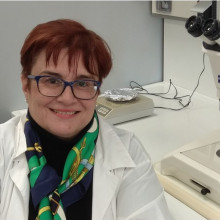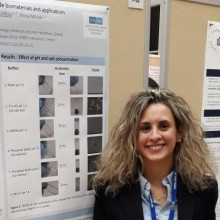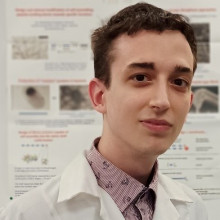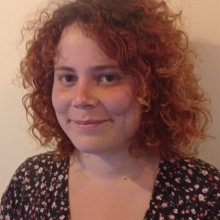The Natural Biomaterials team focuses on developing self-assembling, bioinspired nanomaterials targeted for novel applications. The design of such self-assembling protein and peptide building blocks is often achieved by drawing inspiration of from natural fibrous proteins such as collagen, elastin, silk and spider silks that are built up from repetitive sequences. Self-assembling proteins and peptides are water soluble and biocompatible nanostructures formed spontaneously under mild conditions through non-covalent interactions. They form supramolecular structures such as ribbons, nanotubes and fibers, which often form gels. Protein and peptide based-nanostructures can assemble under mild conditions, though they can withstand elevated temperatures, detergents and denaturants following their assembly. Moreover, the wide range of chemical functionalities found in peptides (ie 20 amino acids) enables the design and engineering of specific interactions with target materials for potential technological applications. Technologically, the self-organized structures can be used as templates for the growth of inorganic materials, such as metals (silver, gold and platinum), silica, calcium phosphates etc. Self-assembling peptides may also create hydrogels and entangled fibrous networks that can be used as scaffolds for attachment, growth and proliferation of living cells, allowing tissue repair and engineering. Therefore, in recent years the study of the properties of self-organization has created a separate area of research, ranging from biomedicine and biotechnology to materials science and nanotechnology. Overall, our team focuses on how to translate fundamental structural knowledge from natural fibrous proteins into concrete integration strategies and applications in the area of fibrous bio-nano-materials.
The team combines therefore expertise in biochemistry, structural biology, biotechnology, nanosciences, material engineering and micronanofabrication, thus going beyond the state of the art methods used in traditional (nano)biotechnology and bioengineering. We have been involved for a number of years in the rational design, synthesis and characterization of self-assembling proteins and peptides following identification of building blocks in natural fibrous proteins such as viral fibers. Such short self-assembling peptides that are amenable to rational design offer open-ended possibilities towards multifunctional material scaffolds of the future. Last but not least, we also foster interdisciplinary collaborations with colleagues that develop techniques to manipulate, assemble and position these materials in a controlled manner and we have a long term collaboration with Dr. Maria Farsari of IESL.







